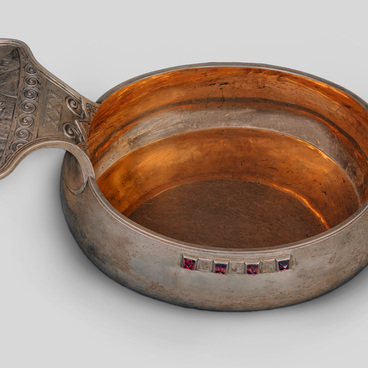The Ivanovo Museum of Local History presents chests, which are good examples of Kholmogory bone carving. This art has been around for over 400 years.
Since ancient times, people of the North have been extracting walrus tusks and collecting mammoth bones along the shores of the Arctic Ocean. A skillful craftsman could make a plain tubular cow bone look like an expensive one. Bones were processed all over the North: from Arkhangelsk to Solvychegodsk and Veliky Ustyug. However, the center of bone carving was in Kholmogory.
The 18th century was the period when the Kholmogory craft flourished. Skillfully made objects from bone — bracelets, decorative cups, caskets, snuff boxes, combs, miniature secretaries, and plates with portraits — enjoyed great demand and were widely spread throughout Russia. One product combined various methods of decoration: exquisite openwork, color engraving, and coloring of bony plates.
Since plain bones do not have a beautiful shade, luster, or texture to them compared to noble mammoth or walrus tusks, craftsmen found an interesting method of bettering their appearance. Bony plates were colored intense green, or less often brown. After being enriched with color, plain bones started to look like an expensive, noble material. The alternation of white and green plates added a touch of uniqueness and decorativeness to the product.
Kholmogory craftsmen made various rosettes using an eyelet pattern and placed them according to the size and orientation (vertical or horizontal) of the bony plates. An eyelet pattern rubbed with bronze powder looks quite eye-catching against the background of brown or green plates. A red or black ornamental pattern was painted on white bony plates. The use of this ornament is typical for the Kholmogory art of the 18th century, especially for its first half. Sometimes engraved images shaped like twigs with elegant leaves and flowers such as tulips were applied to white plates, which gave the products made by Kholmogory craftsmen a festive and elegant look.
In 1930, the craft, which had been in decline since
the second half of the 19th century, began to receive government
support. A vocational school was established in the village of Lomonosovo. In
1932, the Kholmogory bone-carving guild named after Mikhail Lomonosov was also
formed there and was later transformed into the factory of artistic bone
carving named after Lomonosov.



